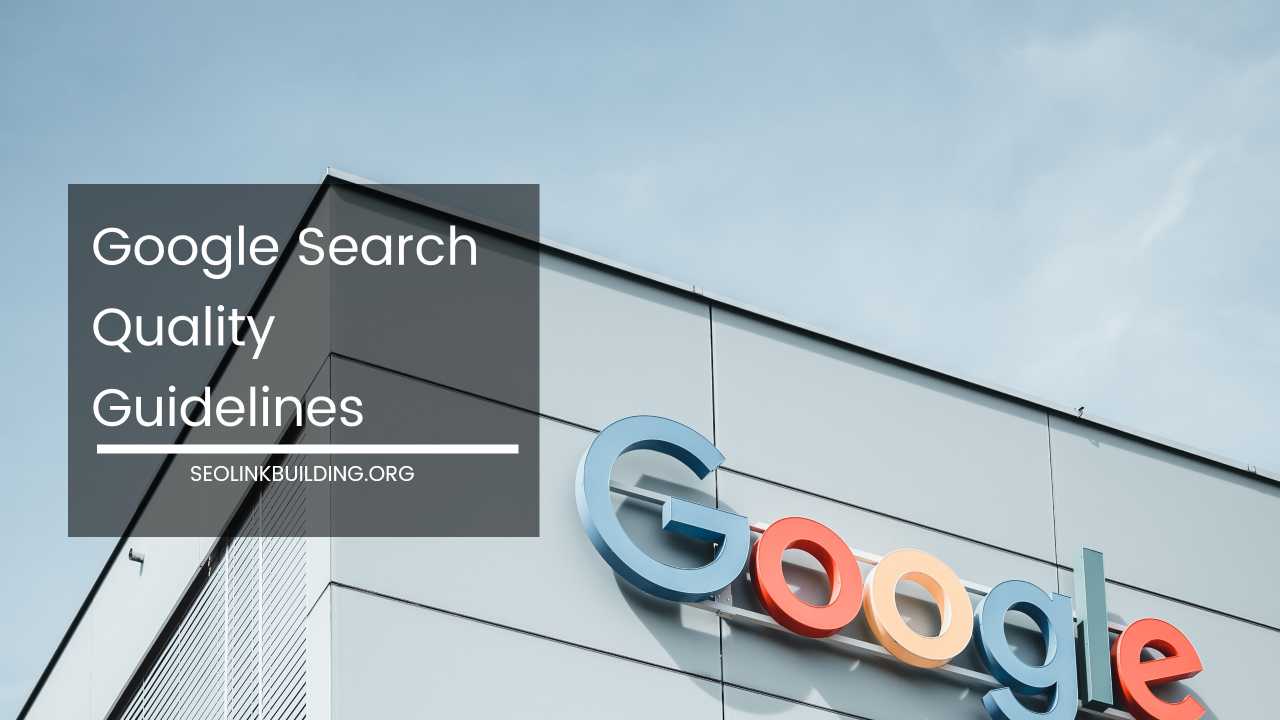Unlock SEO Success: A Guide to Google’s Search Quality Guidelines

Understanding Google’s Search Quality Guidelines: A Masterclass for SEO Success
Ever felt like your website deserves a higher ranking in Google search results, but you’re unsure what tweaks are needed? The answer might lie in Google’s Search Quality Rater Guidelines.
While the exact search ranking algorithm remains a closely guarded secret, these guidelines offer a treasure trove of insights into what Google prioritizes when delivering search results.
By demystifying these principles and understanding how Search Quality Raters evaluate websites, you can craft a winning SEO strategy that positions your website for long-term success.
Unveiling the Search Quality Raters
Imagine a vast network of human evaluators working behind the scenes to ensure Google’s search results are informative and trustworthy.
These are Search Quality Raters, tasked with assessing the quality of webpages based on Google’s outlined guidelines.
Their evaluations provide invaluable feedback that helps Google refine its complex ranking algorithms. Ultimately, this benefits users by connecting them with reliable, high-quality content that truly addresses their needs.
The Pillars of Search Quality: A User-Centric Approach
The Search Quality Rater Guidelines rest on three fundamental principles:
-
Beneficial Purpose: Every webpage should serve a clear and valuable purpose for users. Is it a comprehensive blog post offering insightful analysis? A visually-appealing product page enticing purchase? Or a meticulously researched article on a complex medical topic? Understanding your web page’s purpose is the foundation for crafting content that resonates with your target audience.
-
Expertise, Authoritativeness, and Trustworthiness (E-A-T): Google prioritizes content from credible sources, especially for “Your Money or Your Life” (YMYL) topics that could significantly impact users’ well-being. This includes finance, health, legal matters, and even topics related to personal safety. Building E-A-T involves establishing yourself as a reliable authority in your field.
-
Page Quality: Raters meticulously evaluate various aspects that contribute to a webpage’s overall quality. This includes factors like:
- Content Comprehensiveness: Does the content address the topic thoroughly, providing in-depth information that leaves users feeling informed?
- Content Accuracy: Is the information factually correct, up-to-date, and backed by reliable sources?
- User Experience (UX): Does the website prioritize user-friendliness? A clear structure, easy navigation, mobile responsiveness, and fast loading times all contribute to a positive UX.
Building Trust and Credibility: Your E-A-T Action Plan
Since E-A-T significantly influences search rankings, here’s a detailed roadmap for strengthening your website’s credibility:
- Author Expertise: Don’t underestimate the power of showcasing the qualifications of your content creators. Are they industry professionals, certified experts, or experienced researchers? Highlighting their credentials through bios, awards, or affiliations builds trust and establishes your website as a go-to source for reliable information.
- Content Accuracy: Accuracy is paramount. Ensure your information is factually correct, up-to-date, and cites reliable sources whenever necessary. Back up claims with data, research, and reputable references. Consider establishing a fact-checking process for your content creation workflow.
- Website Reputation: Cultivate a positive online reputation. Encourage customer reviews, testimonials, and positive mentions from credible sources in your industry. Actively respond to reviews, addressing both positive and negative feedback in a professional and helpful manner.
Content Quality: Beyond the Basics
The Search Quality Rater Guidelines emphasize the importance of high-quality content that caters to user intent. Here are some additional strategies to optimize your content for user satisfaction:
- Content Value: Offer unique insights, valuable perspectives, or practical solutions. Go beyond simply summarizing existing information. Conduct original research, analyze industry trends, and provide actionable takeaways for your target audience.
- User Engagement: Encourage users to interact with your content. Pose thought-provoking questions, include interactive elements like polls or quizzes, and allow for comments and discussions.
- Content Freshness: Regularly update your content to ensure it remains relevant and reflects the latest information in your field.
Advanced SEO Considerations: Staying Ahead of the Curve
The Search Quality Rater Guidelines offer valuable insights that extend beyond foundational SEO practices. Here are some additional considerations to stay ahead of the curve:
- YMYL Focus: For YMYL topics, meeting the highest E-A-T standards is absolutely critical. Double-check information accuracy for medical advice, provide clear and up-to-date financial information, and ensure legal content aligns with established regulations.
- Beneficial vs. Harmful Content: Google actively discourages content that could potentially mislead, harm, or endanger users. This includes misinformation, hate speech, content promoting illegal activities, or content that exploits, abuses, or endangers children. Avoiding such harmful content goes beyond just improving SEO; it’s about responsible content creation and protecting your users.
- Technical SEO: While the Search Quality Rater Guidelines primarily focus on content quality, technical SEO plays a crucial role. Ensure your website is mobile-friendly, has a clean and well-structured codebase, and loads quickly on different devices.
- Evolving Guidelines: The digital landscape is constantly changing, and so are Google’s Search Quality Rater Guidelines. Staying informed about the latest updates is crucial for ensuring your SEO strategy remains effective. Regularly monitor Google’s Search Central for updates and announcements.
Measuring Success: Tracking Your SEO Journey
Once you’ve implemented these strategies to optimize your website based on the Search Quality Rater Guidelines, it’s important to track your progress. Here are some key metrics to monitor:
- Organic Traffic: Track the number of visitors coming to your website from search engines. This is a good indicator of your website’s visibility in search results.
- Keyword Rankings: Monitor your ranking for relevant keywords to see if your SEO efforts are paying off. Tools like Google Search Console can provide valuable insights.
- Engagement Metrics: Track metrics like bounce rate, time spent on page, and click-through rate to understand how users are interacting with your content.
- Brand Mentions: Monitor online mentions of your brand to gauge brand awareness and reputation.
By consistently monitoring these metrics and refining your SEO strategy based on data and user behavior, you can ensure your website continues to climb the search engine ladder.
Final Thoughts: A Continuous Journey
Understanding Google’s Search Quality Rater Guidelines empowers you to create a website that thrives in the ever-competitive digital landscape. Remember, SEO is a continuous process.
By focusing on E-A-T, content quality, user experience, and staying updated with Google’s evolving best practices, you can build a website that not only ranks well in search results but also resonates with your target audience, establishing your brand as a trusted authority in your field.













